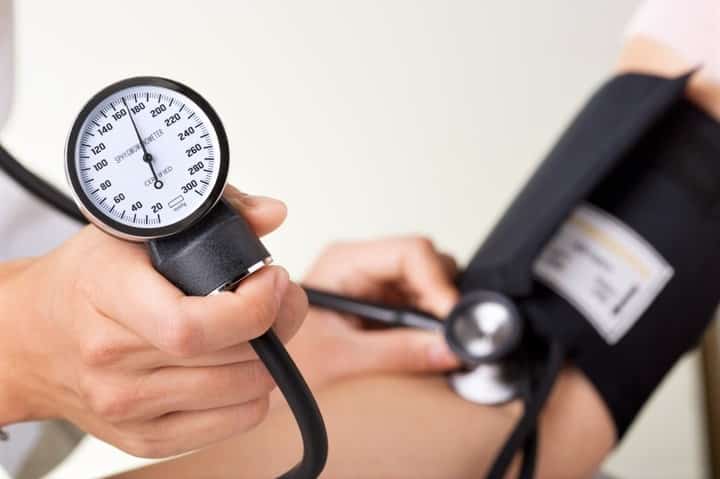A large team of medical researchers affiliated with several institutions in China reports that volunteers regularly engaging in Tai Chi for a year experienced greater reductions in blood pressure systolic compared to volunteers engaged in aerobic exercises for a year.
The study was published in the journal JAMA Network Open.
The benefits of Tai Chi on blood pressure
Prehypertension is a condition that leads to hypertension, another name for chronic hypertension. Previous research has suggested that aerobic exercises (those that increase breathing and heart rate) may prevent the development of hypertension in those with prehypertension. There are also reports of tai chi having much the same effect.
For this new study, researchers wanted to learn more about the impact of both activities over an entire year. To this end, they recruited 349 adult volunteers with prehypertension. The group was split roughly in half, with one subgroup committing to practicing Tai Chi for an hour four times a week for a year and the other subgroup doing aerobic exercises with the same frequency. The researchers took blood pressure measurements at the start of the study, at six months and then at 12 months.
The researchers found that Tai Chi had a more significant impact on reducing blood pressure than aerobic exercise. More specifically, they found that volunteers in the Tai Chi group saw changes of -7.01 mmHg compared to -4.61 mmHg for those in the aerobic exercise group when tested in an office and walking on a treadmill.
They also found larger reductions in the Tai Chi group when they tested the volunteers' blood pressure while they slept. Continuing to monitor the volunteers after the study concluded, they found that fewer people who participated in the Tai Chi group progressed to hypertension than those in the aerobic exercise group.
According to research conducted by a postdoctoral researcher in the Department of Kinesiology, yoga practice that emphasizes mental relaxation and breathing techniques may have as much of a beneficial impact on high blood pressure as aerobic exercise.
Yin Wu's study on the antihypertensive properties of yoga, published in the March issue of Mayo Clinic Proceedings, involved a meta-regression analysis of 49 yoga studies conducted between 1983 and 2018 that looked at specific characteristics of the participants, individual studies and yoga techniques. The results indicated that yoga practice that emphasizes mental relaxation and breathing techniques, along with physical movement, provides the greatest reductions in blood pressure.
“We found that among individuals with hypertension, yoga practice that emphasizes both mental relaxation and breathing techniques can lead to reductions in blood pressure of up to 11/6 mmHg, which is equal to or greater than those reported for aerobic training,” says Wu. “Where yoga practices did not emphasize breathing techniques and mental relaxation, reductions in blood pressure were found to be 6 to 3 mmHg.”
The study highlights yoga's potential as an alternative antihypertensive therapy, particularly for those who cannot or do not want to perform aerobic exercise.
“We're not telling people to use yoga to replace aerobic exercise,” Wu says. “Aerobic exercise is the gold standard for lifestyle antihypertensive therapy. But yoga provides an additional option that can be just as effective.”
While yoga shows promise in helping to control blood pressure, Wu is quick to point out the need for more research, including well-controlled randomized trials directly comparing the blood pressure response to yoga and aerobic exercise, currently the leading type of exercise recommended for adults with hypertension.
Static isometric exercises, those that engage muscles without movement, such as wall sits and planks, are best for lowering blood pressure, according to an analysis of data compiled from available evidence from clinical trials, published online in the British Journal of Sports Medicine.
Cardio (aerobic exercise); dynamic resistance training, such as squats, push-ups and weights; high-intensity interval training or short-period HIIT (short episodic bouts of high-intensity exercise interspersed with short recovery periods at lower intensity) are all effective, the findings indicate.
It may be time to revisit current exercise guidelines for the prevention and treatment of hypertension, researchers suggest.
Previously published research shows that exercise in general is associated with significant reductions in blood pressure, with aerobic exercise, such as walking, running and cycling, the type primarily recommended for blood pressure management.
But this recommendation is largely based on older data that excludes newer forms of exercise, such as HIIT and isometric exercise, meaning the current recommendations are likely outdated, the researchers suggest.
In an effort to potentially update information on the best form of exercise to control blood pressure, they scanned research databases for clinical trials reporting the effects of an exercise training intervention lasting two or more weeks on blood pressure at rest.
Exercise interventions were classified as aerobic (cardio); dynamic resistance training; a combination of these; HIIT; and isometric exercises.
Healthy resting blood pressure was defined as a reading less than 130/85 mmHg; pre-high blood pressure equal to 130-139/85-89 mmHg; and arterial hypertension equal to or greater than 140/90 mmHg.
Systolic blood pressure, the first number in a reading, measures blood pressure when the heart is beating; diastolic blood pressure, the second number, measures blood pressure between beats.
In total, 270 randomized controlled trials published between 1990 and February 2023 were included in the final analysis, with a pooled data sample of 15,827 participants.
Analysis of the pooled data showed significant reductions in resting systolic and diastolic blood pressure after all exercise categories, but with the greatest drops in both systolic and diastolic blood pressure following isometric training.
Reductions in blood pressure after aerobic training were 4.49/2.53 mmHg; 4.55/3.04 mm Hg after dynamic resistance training; 6.04/2.54 mmHg after combined training; 4.08/2.50 mmHg after HIIT; and 8.24/4 mmHg after isometric training.
The rank order of efficacy values for reducing systolic blood pressure was isometric training (98%), combined training (76%), dynamic resistance training (46%), aerobic training (40.5%), and HIIT ( 39%).

Secondary analyzes revealed wall squats (isometric) and running (aerobic) as the most effective individual exercises for reducing systolic blood pressure (90.5%) and diastolic blood pressure (91%), respectively, with the Isometric exercise, overall, the most effective for reducing both elements of blood pressure.
The researchers recognize that variations in the types of participants included in clinical trials and differences in statistical and methodological processes and exercise interventions may have influenced the results, and therefore they should be interpreted in light of these limitations.
But they still conclude: “Overall, isometric training is the most effective modality for reducing both systolic and diastolic blood pressure.”
“These findings provide a comprehensive data-driven framework to support the development of new exercise guideline recommendations for the prevention and treatment of high blood pressure.”
A team of researchers including members of the University of Colorado, the University of Arizona and Alma College, all in the United States, has found that breathing resistance training can lower blood pressure as much as some drugs and /or exercises. The study is published in the Journal of Applied Physiology.
Hypertension, also known as chronic high blood pressure, can lead to a wide variety of health problems, from vision loss to strokes and heart attacks. This is why doctors take it seriously. Typically, patients are asked to change their diet and exercise more. If this does not solve the problem, medications are prescribed. In this new effort, researchers examined a new type of therapy for reducing blood pressure levels: breathing resistance training.
Resistance breathing training involves breathing in and out of a small device, called, of course, a POWERbreathe, every day for several minutes. The device forces the patient to use their breathing muscles to push and suck air through it, making them stronger. And this, the researchers found, also reduces blood pressure. The device has been in use for several years as a means to assist athletes, singers and people with weak lung muscles.
Several groups of healthy volunteers practiced the workout for a few minutes every day for six weeks. Each was inspired and exhaled with the device 30 times per session. Each of the volunteers had their blood pressure measured before and after training.
The researchers found a sustained average drop of 9 mmHg in systolic blood pressure (the highest number in blood pressure readings): normal blood pressure is defined as 120/80. They describe the change as significant, much as some patients see with medications. They also note that it is similar to changes seen in many patients who begin a regimen of aerobic exercise, such as walking, cycling or running.

They suggest that such training could be used by patients of all ages who are unable to exercise to lower blood pressure.
#Blood #pressure #Tai #Chi #helps